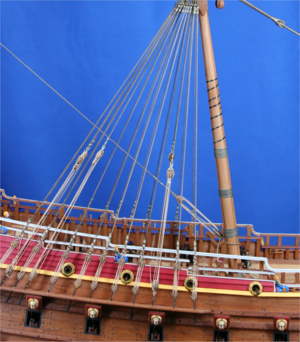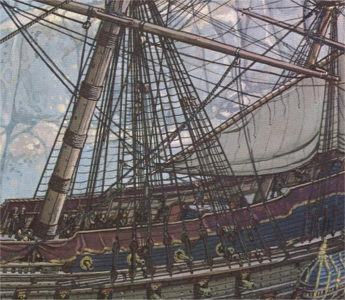Paul
Simply wonderful work enhanced further more by your humility
Kind Regards
Nigel
Simply wonderful work enhanced further more by your humility
Kind Regards
Nigel
 |
As a way to introduce our brass coins to the community, we will raffle off a free coin during the month of August. Follow link ABOVE for instructions for entering. |
 |
 |
The beloved Ships in Scale Magazine is back and charting a new course for 2026! Discover new skills, new techniques, and new inspirations in every issue. NOTE THAT OUR FIRST ISSUE WILL BE JAN/FEB 2026 |
 |
Jim, I think Paul is winding us all up here. I figured it out - he is professional ship model builder commissioned by Vasa museum. But it's OK, I'll live with his story.I did ask the same question a few posts back...
....don't open a can of worms about 'museum quality and museum level'he is already at the museum level now.
I'm secretly archjofo operating under a nom de plume...Jim, I think Paul is winding us all up here. I figured it out - he is professional ship model builder commissioned by Vasa museum. But it's OK, I'll live with his story.



Jim....don't open a can of worms about 'museum quality and museum level', but you are correct, very high-quality modeling, for sure.
 I have seen fantastic models that SHOULD be in a museum and some frankly crude models that are in a museum
I have seen fantastic models that SHOULD be in a museum and some frankly crude models that are in a museum . Nothing left to add- Paul
. Nothing left to add- Paul



 , just an exclamation- Wow.
, just an exclamation- Wow.



That is so well put Peter - this kind of posting shows great objectivity, logic and above all maturity on a subject that can be best described as one riddled with assumptions and suppositions!Thank you Paul.
I knew you would not have used this combination of rigging without having thought it through. My assessment is that you don’t do anything without research and thinking it through. This is abundantly evident by the quality of your work - Oh, for a tooth doctor down the road of your calibre!!
I like Landstrom, especially his artwork, but his detail has proven to be inaccurate. many Mondfield too, although good, may not always be relevant to a ship of Vasa’s age and origin. Anderson is excellent but again, unless he specifically refers to Dutch/Swedish ships, can be a guide only.
The visual variation I can appreciate. Attention to detail, as you demonstrate is paramount. Let me assure you, it gets worse with running rigging. I have many unanswered questions where you make a decision about a line or rig arrangement and then later change it. But, in the end, so long as YOU are happy with your decision, move on to the next bit.
Certainly the Vasa II book would assist, but with the lack of recovered rigging from the ship, many of their (Fred Hocker et al) suppositions will be wrong too. We can only do our best, and yours is a wonderful example of that!!
Regards,
PeterG
That is so well put Peter - this kind of posting shows great objectivity, logic and above all maturity on a subject that can be best described as one riddled with assumptions and suppositions!
